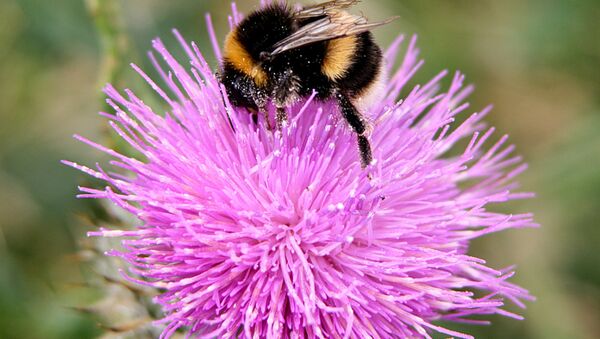The species, named for a distinctive red patch on its belly, was once abundant in the upper midwestern and northeastern United States, but its population has been reduced by almost 90 percent over the last 20 years.
The US Fish and Wildlife Service says that disease, pesticides, climate change and habitat loss are contributing to the decline of the wild bee population.
This insect is a vitally important pollinator for almost one-third of US crops, from blueberries to tomatoes, according to Sarina Jepsen of the Xerces Society for Invertebrate Conservation.
Jepsen says neonicotinoid pesticides, commonly used in insecticides such as those manufactured by Bayer, are a key factor in decimating wild bee populations.
"[The] Endangered Species Act safeguards are now the only way the bumble bee would have a fighting chance for survival," Jepsen told Reuters.
The problem is not only affecting the rusty patched bumblebee, as, according to the International Union for the Conservation of Nature (IUCN), more than one quarter of the 47 varieties of wild bees present in the US are at risk of extinction.
In Russia, eight species of bumble bees are included in the so-called Red Book, a state document that lists endangered species protected in the country.



